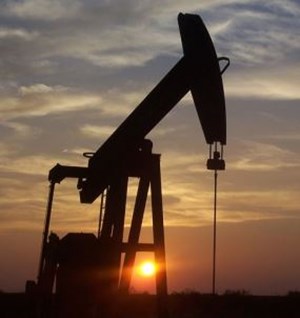(Bloomberg) – U.S. shale companies are forging ahead with their production plans, adapting to $60 oil prices while grinding out small increases and setting up the industry to add to next year’s record supply glut.

Diamondback Energy Inc., Coterra Energy Inc. and Ovintiv Inc. this week announced plans to raise output slightly for this year or 2026 despite oil prices falling close to the threshold needed for many U.S. shale wells to break even. Last week, Exxon Mobil Corp. cemented its position as the biggest Permian basin operator by lifting its 2025 production guidance by 100,000 boed, more than some small companies’ total output.
It’s all thanks to advancements in recent years that have made producers more efficient, allowing them to pump more crude for every dollar spent.
“Shale has to a large extent become a technology story, not in the Silicon Valley sense but in a drilling technology sense,” said Ben Hoff, global head of commodity strategy at Societe Generale SA. “It’s allowed the industry to keep barrel outputs relatively constant while tackling the other side of the ledger, which is costs.”
The resiliency of U.S. oil production stands in stark contrast to earlier this year, when crude prices tumbled 15% in less than a week after President Donald Trump announced a raft of tariffs in April. With OPEC increasing supplies, American oil executives at the time raised the possibility of shrinking U.S. production if prices fell toward $50 a barrel, below the break-even point for most of the industry.
But those prices were short-lived. And shale’s years-long efficiency push was helping to lower costs, driving U.S. oil output near 13.8 MMbpd in August, a fresh record, according to the Energy Information Administration. Some of the increases were caused by higher output from the U.S. Gulf, where several projects many years in the making recently came online.
But it’s also clear that small technical gains in shale are adding up.
“Never underestimate the American engineer,” Diamondback Chief Executive Officer Kaes Van’t Hof said in a letter to shareholders Monday.
“We’re going to find a way to make more money despite macro headwinds,” he said on a call with analysts.
Faster drilling and improved pumping methods reduced Diamondback’s break-even oil price to about $37 a barrel, 8% lower than two years ago. Coterra raised the potential of growing 5% next year to about 168,000 barrels a day while spending “modestly” less. The savings will come in part from installing microgrids in West Texas to reduce power costs, according to the company’s output guidance.
Ovintiv, a Denver-based shale producer with assets stretching from western Canada to the Permian, raised the midpoint of its guidance for this year by less than 1% to 209,000 bpd and kept its previously reduced spending plans intact.
But the biggest gains are coming from Exxon, which hiked its 2025 output guidance by 7% to 1.6 million boed. The increase alone is as much as the entire company-wide output of a small independent producer like Magnolia Oil & Gas Corp. Chief Executive Officer Darren Woods credited the boost to new fracing methods such as using light-weight proppant to improve recovery rates.
“It clearly differentiates us from our competitors who are talking about reduced investments, peak production or a shift to harvest mode,” Woods said.
In today’s oversupplied oil market, the increases from the U.S. could have global consequences. Macquarie Group Ltd., one of the few commodity trading firms to correctly predict 2023’s shale growth, says prices will have to fall into the low $50-a-barrel range before the industry pulls back.
“At current price levels U.S. producers are still incentivized to grow,” Walt Chancellor, a Houston-based energy strategist at Macquarie, said in an interview. “The balances look so oversupplied to us that the market will have to send a signal to the U.S. to stop growing.”

